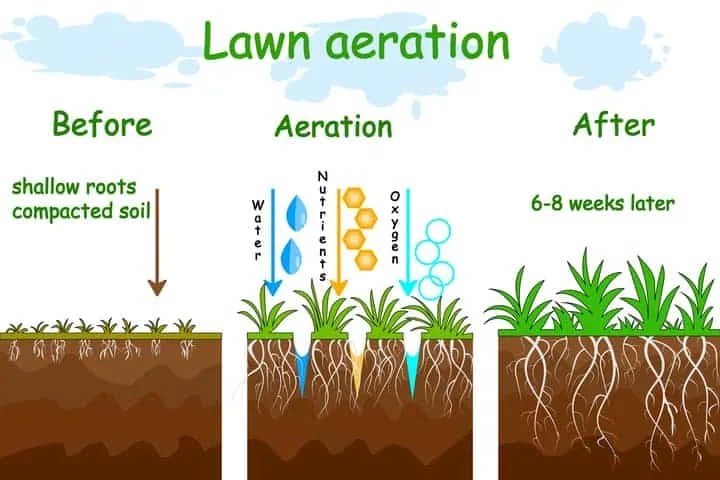1.) Does my Rhode Island lawn need aeration?
Grasses can eventually die out for lack of the oxygen, water and nutrients that live on the surface of your lawn. Excess lawn thatch, which is a layer of living and dead turfgrass tissue that has amassed on a lawn, can also starve the roots from these vital elements. Aerating your lawn allows these nutrients to reach the root system of your lawn and promotes a thicker, healthier and greener lawn that is better equipped to defend against unwanted weeds.
2.) Why is overseeding a good idea for my aerated Rhode Island lawn?
Overseeding is highly beneficial for both the appearance and the health of your lawn. Not to be confused with ordinary seeding, overseeding is the process of adding seeds to the lawn to improve its quality and appearance.
The critical difference between seeding and overseeding is that a gardener undertaking seeding will sprinkle grass seeds on prepared soil to grow it from scratch. By contrast, overseeding is adding grass seed to existing lawns (with grass already in place). This process improves the look of a lawn that has developed brown or bare areas while also thickening the grass to increase its overall density.
The most important step you can take before overseeding your Rhode Island lawn is aerating your soil. No matter what seeds you use, they can’t germinate in compacted soil devoid of water, nutrients, and sufficient air exchange. That’s why it’s crucial to aerate your lawn before starting the overseeding process. By doing so, you ensure the grass seeds can nestle in the soil nicely, and benefit from the soil conditions that healthy growth necessitates.
3.) Is it better to aerate my Rhode Island lawn in the fall or spring?
The best time to aerate a Rhode Island lawn is in late summer or early fall, as this will allow your grass to recover completely before going dormant in the winter. The very best time to aerate is during the months of September and October when the temperatures have cooled off, when the weed pressure is minimal, and when grass is actively growing.
4.) How does the aeration and overseeding process work?
A plug aerator (or core aerator) removes multiple cores or plugs of grass and soil from the lawn. It executes the process through spikes that consist of hollow cylinders.
This aeration process loosens the compaction of soil under the lawn to improve root growth, water drainage, and the fertilization uptake of turf. It also helps oxygen to reach the root structure of plants and grass. Even a single aeration session can open new channels for these essentials to put your lawn back on an upward trend.
The benefits of aeration are many:
• Aeration increases oxygen, water, and nutrient movement through the soil.
• Aeration creates stronger roots.
• Aeration allows for better absorption of rainfall and irrigation.
• Aeration helps develop a topsoil layer underneath the grass.
• Aeration prevents fertilizer and pesticide runoff.
• Aeration inhibits thatch accumulation.
5.) How long does it take for aeration to work?
It takes approximately one to two weeks for the plugs to break down on their own. Watering the lawn will help the plugs break down.
GreenWorks will apply fertilizer immediately after aerating your lawn to feed nutrients into your grass roots. We can then reseed your lawn, especially in areas of the lawn where the grass is thin. The seeds mix with the soil plugs and have better access to non-compacted soil following aeration.
To arrange for the aeration and overseeding of your lawn, contact GreenWorks today at 401-521-5296.


